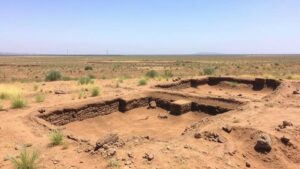Mapping Historical River Dredging Projects for Submerged Relic Finds
Mapping Historical River Dredging Projects for Submerged Relic Finds
The study of river dredging and its impact on submerged relic finds is a vital component of archaeological and historical research. This article examines the historical context of river dredging in various locations, the methodologies employed in mapping these projects, and the significance of submerged relics uncovered through such activities. By delving into specific case studies and utilizing geospatial analysis, this research aims to create a comprehensive overview of the relationship between dredging practices and artifacts recovery.
Historical Context of River Dredging
River dredging has been employed for centuries in various cultures as a means to navigate, manage floodwaters, and facilitate commerce. practice often involves the removal of sediment and debris from riverbeds, which can inadvertently lead to the exposure of submerged relics.
Notable dredging activities include:
- The Suez Canal (Opened in 1869): This engineering marvel required significant dredging efforts and has a history of revealing ancient artifacts from various civilizations.
- The Panama Canal (Completed in 1914): Extensive dredging activities unearthed numerous historical structures and relics from Indigenous communities and colonial settlements.
- New York City’s Harlem River (Late 19th Century): Dredging for navigation purposes exposed remnants of the earlier settlements, including the remains of the Spanish-American War vessels.
Methodologies in Mapping Dredging Projects
The mapping of historical river dredging projects typically demands a multidisciplinary approach, combining elements of archaeology, hydrology, and geospatial technologies. The following methods are commonly utilized:
- Geographical Information Systems (GIS): GIS technology allows researchers to map the spatial distribution of dredging activities and correlate them with archaeological finds. For example, GIS has been used to analyze dredging patterns in the Mississippi River, revealing significant artifact locations.
- Remote Sensing: Techniques such as LiDAR (Light Detection and Ranging) aid in identifying submerged features that are often obscured underwater, facilitating the location of potential relic sites.
- Underwater Archaeology Techniques: Submersible vehicles equipped with cameras and sonar technology help document finds in depths primarily affected by dredging.
Case Studies of Submerged Relic Finds
Case Study 1: The Thames River, London
The Thames River has a deep historical significance and has been subject to extensive dredging operations, particularly in the 19th and 20th centuries. A notable project was the dredging for the construction of the Thames Barrier in the 1980s, which uncovered various relics including Roman pottery and medieval artifacts.
In 2013, archaeologists mapped dredging areas along the Thames and found over 13,000 artifacts, spanning from prehistoric times to the Victorian era. These finds have not only provided insight into London’s historical commerce but also facilitated the understanding of the socio-economic conditions of its inhabitants throughout centuries.
Case Study 2: The Molineux River, Australia
The Molineux River experienced significant dredging during the early 20th century for gold mining purposes. Archaeological studies conducted in 2010 revealed a rich trove of Aboriginal artifacts, with over 500 items found during riverbank dredging.
The findings prompted a reevaluation of the rivers cultural significance, revealing that it served as a vital resource for Aboriginal communities for thousands of years prior to European colonization. e submerged relics are critical pieces of evidence that inform historical narratives about Indigenous populations and their interactions with the environment.
Case Study 3: The Mississippi River
The Mississippi River has seen numerous dredging activities aimed at flood control and navigation improvement. A mapping project initiated by the US Army Corps of Engineers indicated the discovery of various artifacts dating back to the Civil War era.
In 2021, a systematic dredging survey identified locations of sunken steamboats and military vessels, which provided context to the historical flooding and transportation routes of the 19th century, underscoring the rivers role in shaping American history.
Significance and Future Directions
The recovery of submerged relics through dredging provides a unique perspective on the past interactions of humans with aquatic environments. These historical artifacts serve as tangible connections to cultural heritage, enabling researchers to construct narratives steeped in context and factual evidence.
Going forward, it is essential to integrate technological advancements in mapping and analysis while fostering collaboration between archaeologists, historians, and engineers to ensure the preservation of submerged relics. Key areas for future research include:
- Developing more refined techniques for dating artifacts found in dredged sediments.
- Creating comprehensive databases that connect dredged sites with documented artifacts to enhance historical understanding.
- Encouraging public awareness and policy-making for the protection of historically significant underwater sites.
Conclusion
The intersection of river dredging and archaeological discovery offers profound insights into historical contexts that would otherwise remain submerged. By rigorously mapping dredging projects and their findings, researchers can continue to unearth hidden narratives from our past. Embracing innovative technologies and multi-disciplinary approaches will be instrumental in ensuring that the floating relics of yesteryears not only resurface but are also preserved for future generations.


